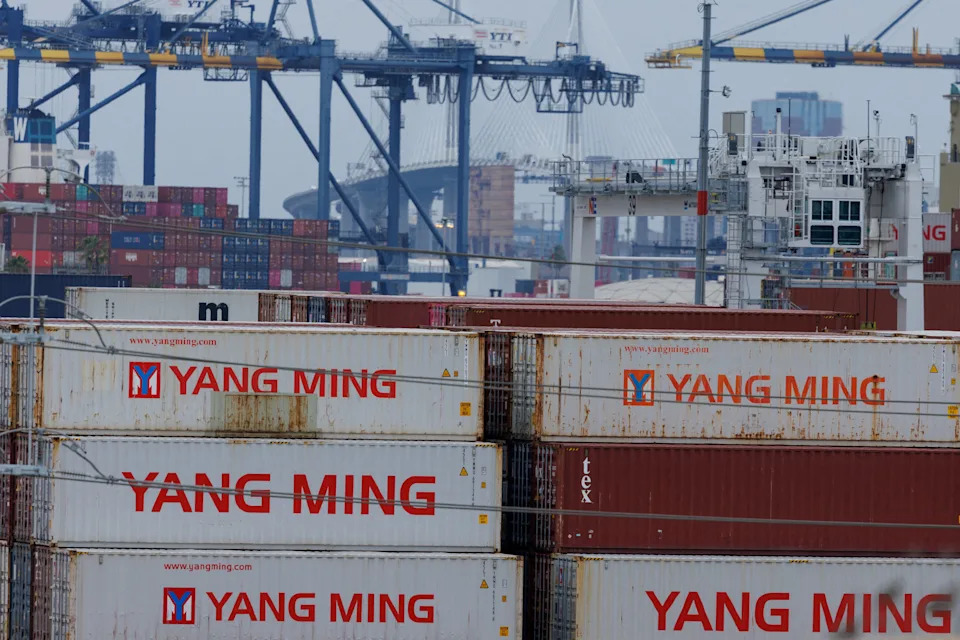Chinese imports to the U.S. dropped to their lowest levels since the pandemic as punishing tariffs began to take hold in March, according to recently released Census trade data.
The drop in trade between the two countries was a major impetus for talks this weekend that led to steep reductions in tariffs on both sides. Still, overall imports to the U.S. surged to record levels as goods from the European Union, Mexico and Canada continued to pour in.
U.S. imports for consumption exceeded $340 billion in March, surpassing the previous record set in January by more than $20 billion. The total marks a 37% increase over March 2024 and the highest monthly import figure since recording started in 2002.
Trade experts attributed the shift in trade patterns to on-and-off tariffs under the administration of President Donald Trump.
“Everybody trying to beat the tariffs skews everything,” said Jennifer Hillman, professor of practice at the Georgetown University Law Center and an international trade researcher with the Council on Foreign Relations.
How did import levels affect the China-U.S. deal?
China, one of the United States’ largest trading partners and a major target of Trump’s ever-changing tariff policies, saw its lowest imports in the past five years, at nearly $28 billion – a 5% decrease compared to March 2024.
After months of escalating tariffs between the world’s two largest economies, the trade war between the U.S. and China is entering a new chapter – a steep reduction of their respective tariffs for 90 days as the two countries continue trade talk this week.
Under the new trade deal, the U.S. will lower its tariff on Chinese imports from 145% to 30%, while China will cut its import duty on American goods from 125% to 10%.

"W e achieved a total reset with China after productive talks in Geneva," Trump said on May 12. "The best part of the deal was that we opened up China. China agreed to open itself up to American business."
In March, imports from China fell off as Trump doubled the tariffs on all Chinese goods to 20% and imposed 25% duties on all steel and aluminum imports on top of existing tariffs.
In April, when Trump paused his “reciprocal” tariffs, universal taxes on almost everything from every country for 90 days, the U.S. tariffs on Chinese goods climbed up to 145%.
“One of the really bad things about these tariffs is how regressive they are,” said Hillman, the international trade expert. “In other words, for your average low or middle-income family, they're going to spend about 40% of their total income, even some more like 50%, buying goods, the exact same goods that are subject to all these tariffs.”
China supplies 74% of imported toys in the U.S., 40% of imported footwear and headgear, and a quarter of electronics and clothing, based on a USA TODAY analysis of U.S. imports in 2024.
Imports from the European Union soared
Despite Chinese imports dropping to a post-pandemic low, shipments from key partners like the European Union, Mexico, and Canada flooded the U.S. in March.
Imports from the European Union climbed the most in March, accounting for roughly one-fourth of total U.S. imports that month at nearly $82 billion. That’s a 65% rise compared to March 2024.
President Trump threatened a 200% tariff on European wine, champagne and spirits in March if the EU decided to move forward with its 50% retaliatory tariff on American whiskey.
While the 200% wine tariff was never implemented, the EU faces 25% U.S. tariffs on its steel, aluminium and cars, plus a 10% “reciprocal” tariff on almost everything, which could rise to 20% after the current 90-day pause ends July 9.
“People are trying to take advantage of the tariff not being 200%, that they want to get in while it's 10%. So, a lot of people are ordering right now,” said Patrick Allen, an importer of European wines based in Columbus, Ohio. “You're going to see a surge now, because there's a window, but that window is going to be closing shortly.”
March wine imports from the European Union hit nearly $526 million – the highest for that month since 2002 and a 23% jump from March 2024, according to a USA TODAY analysis of the latest trade data.
Allen said a 200% tariff would put a lot of companies out of business; a 20% tariff would kill traders’ cash flows; as for a 10% tariff, “it's just painful.”
“These small and medium-sized enterprises have not done anything wrong,” said Hillman, the trade expert. “Think about all the things that are simply not produced in the United States. European wine is one of them, clearly. But, coffee, cocoa, critical minerals, etcetera and etcetera. And now we're just increasing the price on all of that.”
Allen said he has already raised wine prices for his distributors, and after running the wine import company with his wife, Connie, for 21 years, he’s worried about the future of their business.
“A small tariff is difficult. A large tariff? We find some new business to do, something else to do with our lives.”
This article originally appeared on USA TODAY: Chinese imports fall under U.S. tariffs as total imports hit record





